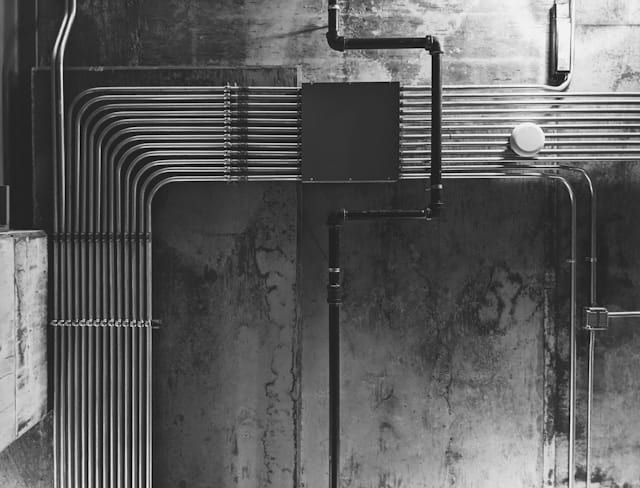What Is the Best Method for Installing Underfloor Heating in a Retrofit Project?

Underfloor heating (UFH) systems are increasingly becoming a popular choice in many homes due to their efficiency and comfort. These systems are particularly beneficial for retrofit projects, where the objective is to improve the existing heating system while minimizing disruption to the existing build. The decision to retrofit an underfloor heating system is usually influenced by factors such as cost, energy efficiency, and the nature of the existing floor build. In this article, we will explore various methods for installing underfloor heating in a retrofit project, and help you identify the best one for your specific situation.
Water-Based Underfloor Heating Systems
Water-based, or hydronic, underfloor heating systems use warm water circulated through pipes beneath the floor to provide heat. These systems are typically integrated into the home’s existing central heating system.
Sujet a lire : How Can You Create a Luxurious and Relaxing Spa Bathroom in a Small Space?
When it comes to retrofitting, it’s essential to know that water-based systems require substantial work as they can raise floor levels significantly due to the depth of the installation. This factor could be disruptive to your current home structure and may necessitate other renovations. Therefore, while water-based systems are superbly efficient, they may not be the best choice for a retrofit project, especially if you’re working with an existing floor that can’t be significantly altered.
Electric Underfloor Heating Systems
Unlike water-based systems, electric underfloor heating utilizes a network of electric wires or heating mats that are installed directly beneath the floor surface. Electric systems are generally thinner and easier to install, making them more suitable for retrofit projects.
A lire aussi : What’s the Best Way to Soundproof a Home Cinema Room for Maximum Audio Impact?
Electric UFH systems can be used under a wide variety of floor finishes, including tile, wood, and carpet. This versatility makes it a popular choice for homeowners. Although electric UFH systems can be more expensive to run than water-based systems, they have lower installation costs and can be more effective in smaller areas like bathrooms or kitchens.
Factors to Consider when Retrofitting Underfloor Heating
When considering retrofitting underfloor heating, several factors will influence the best method for your project.
Type of Existing Floor
The type of existing floor can determine the feasibility and cost of the UFH retrofit. For example, electric UFH systems are easier to install on existing wooden suspended floors, while water-based systems may be more suitable for solid concrete floors.
Energy Efficiency
While the cost is a significant factor, it’s also important to consider the energy efficiency of the system. Depending on your house’s insulation and size, a water-based system might be more energy-efficient in the long run.
Installation and Running Costs
Understanding both the upfront installation cost and the long-term running cost of a UFH system will inform your decision. Electric UFH systems generally have lower installation costs but higher running costs, while water-based systems may be more expensive to install but cheaper to run.
Choosing the Best Method for Your Retrofit Project
Only after considering all these aspects, you can decide the best method for installing underfloor heating in a retrofit project.
If you have an existing wooden suspended floor and are looking for a less disruptive installation, an electric UFH system could be your best bet. For homes with solid concrete floors, a water-based system might be more suitable, though the installation process will be more disruptive.
Regardless of the chosen system, remember that proper installation is vital for the UFH system to operate efficiently. Therefore, always ensure that a qualified professional installs your system to avoid any potential issues down the line.
The Future of Underfloor Heating and Retrofitting
The advancement in technology is not leaving the underfloor heating market behind. Manufacturers are constantly developing slimmer, more efficient systems that are easier for retrofit installation. More homeowners are recognizing the benefits of UFH systems, making them a viable option for both new builds and retrofit projects.
In conclusion, when choosing the best method for installing underfloor heating in a retrofit project, factors such as the type of existing floor, energy efficiency, and installation and running costs must be considered. It’s also paramount to work with professionals to ensure your UFH system is installed correctly. With the right planning and execution, retrofitting underfloor heating can significantly enhance your home’s comfort and value.
Low-Profile Underfloor Heating Systems
One of the innovative solutions to installing underfloor heating systems in a retrofit project without significantly altering the existing floor structure is the usage of low-profile UFH systems. These systems have been specifically designed to provide an effective heating solution with minimal floor height increase.
Low-profile UFH systems are much thinner than traditional ones, thus reducing the impact on floor levels. They are available in both electric and water-based forms, enabling homeowners to choose an option that suits their specific needs. An electric low-profile system is usually the thinnest, making it an excellent option for installations where floor height is a critical factor.
However, one must remember that while these systems may be less disruptive to install, they may not provide as much radiant heat as thicker systems. Therefore, homeowners should carefully consider their heating requirements and discuss with a professional to decide whether a low-profile UFH system would be an effective solution for their retrofit project.
Heat Pumps and Underfloor Heating Systems
Incorporating heat pumps into the underfloor heating system is another effective method to consider for a retrofit project. Heat pumps are known for their energy-efficiency, making them an ideal choice for homeowners looking to reduce their carbon footprint and energy costs.
Heat pumps work excellently with water-based UFH systems as they operate at lower temperatures than traditional boilers. This feature makes them an excellent partner for radiant floor heating, which also operates at lower temperatures compared to other heating systems.
However, remember that integrating a heat pump into your UFH system could add to the initial cost of the installation. It’s important to weigh this cost against potential long-term energy savings and to consider the suitability of your property for a heat pump installation.
Conclusion: Considerations for a Successful Retrofit Underfloor Heating Installation
Undertaking a retrofit project to install an underfloor heating system can have significant benefits, including increased comfort and potential energy savings. However, the success of the project is determined by careful planning, considering variables such as the type of existing floor, desired floor finish, cost, and energy efficiency of the UFH system.
The best method for installing underfloor heating in a retrofit project will depend on the individual circumstances of the homeowner and the property. Options such as low-profile UFH systems and the integration of heat pumps offer innovative and energy-efficient solutions that could be ideal for certain situations.
As underfloor heating technology continues to evolve, we expect to see the development of even more efficient and easy-to-install systems. This progress will make UFH systems a more accessible and attractive option for a wide range of retrofit projects.
Always remember, for an effective and trouble-free installation, it’s crucial to work with experienced professionals who can guide you through the process, ensuring your UFH system meets your requirements and operates efficiently.
Regardless of the chosen method, retrofitting underfloor heating is a worthwhile investment that can significantly enhance your home’s comfort and value, making it a warm and inviting space for years to come.
